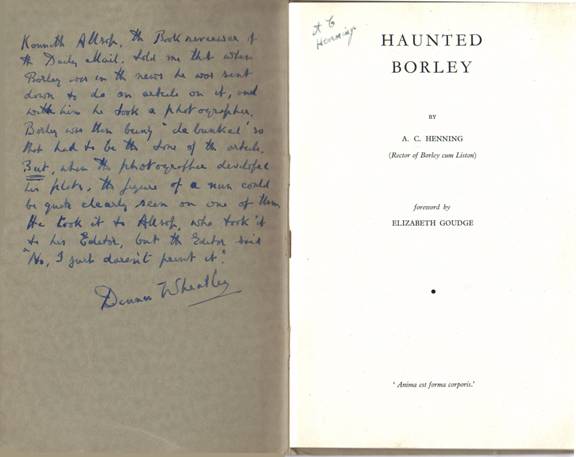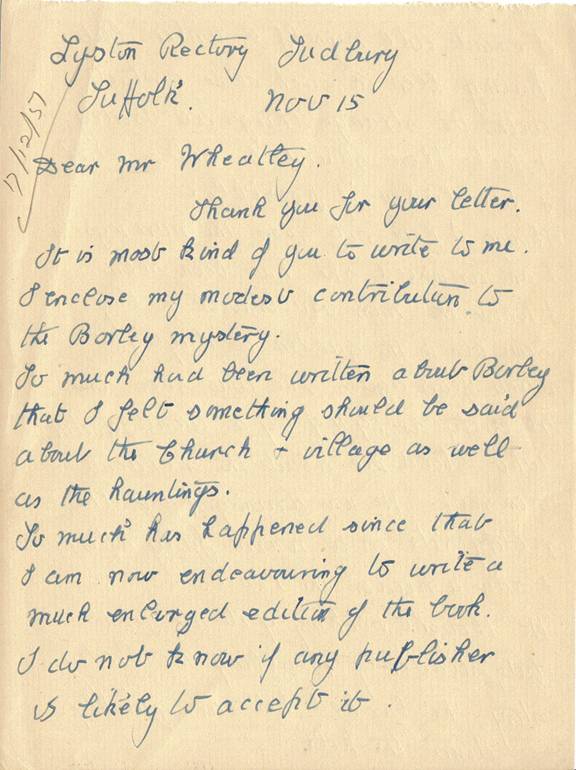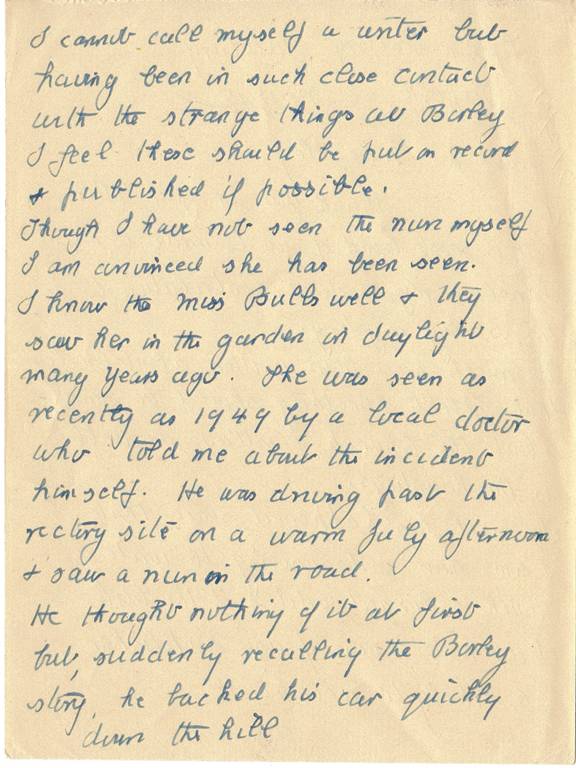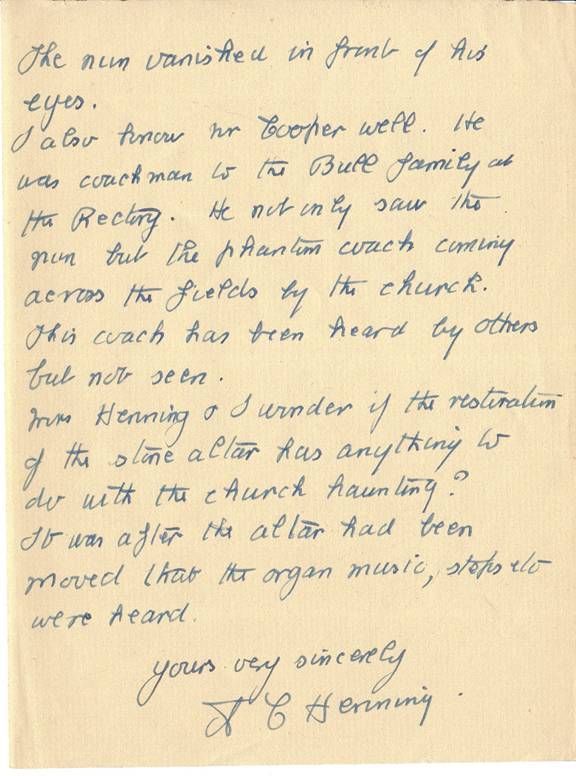|
Biography |
||||||||||||||
|
|
Dennis Wheatley (1897-1977), dubbed by the Times Literary Supplement as the 'Prince of Thriller Writers', really needs no introduction. At the height of his powers he was one of the world's best-selling authors in a writing career than spanned from the early 1930s through to the mid 1970s, although only nine out of a total of his fifty-four books were the black magic stories for which he is famous. The only son of a Mayfair wine merchant, Dennis Wheatley entered the family business at the age of sixteen and became in the ensuing years a successful merchant in his own right. However the financial crisis of the early 1930s brought him close to bankruptcy and in the recovery period which followed Wheatley tried his hand at writing, producing a thriller entitled Three Inquisitive People. This was initially rejected but it introduced a quartet of characters (the Duc de Richleau, Rex van Ryn, Simon Aron and Richard Eaton, known as 'Those Modern Musketeers' after Wheatley's main literary influence, the great Alexander Dumas) who were to feature again in his second novel The Forbidden Territory which was published by Hutchinson in 1933 and which became an instant best-seller, catapulting Wheatley to fame and literary success. Wheatley's 'Modern Musketeers' were featured again the following year when in December 1934 Hutchinson published what has become his most famous book, the classic black magic thriller The Devil Rides Out, the 20th century's natural successor to the other great works of the genre such as Bram Stoker's Dracula and Mary Shelley's Frankenstein. It was while researching for this book that the future 'Prince of Thriller Writers' met someone who could well be described as the 'Prince of Poltergeists' - Harry Price.
The Devil Rides Out was not Dennis Wheatley's first foray into the occult. In January 1933 he had published in Nash's - Pall Mall Magazine a short story called The Snake which introduced readers to the dangers of getting on the wrong side of a tribal shaman. After the success of The Forbidden Territory and his follow up novels Such Power is Dangerous, Black August and The Fabulous Valley, Wheatley began casting around for a new background in which to set his next work and decided upon the Black Arts, and more specifically the survival of Black Magic practices into the modern day. Throughout his career as a writer Wheatley was meticulous about researching for his books - at his later home at Grove Place in Lymington he had his own library of 4000 volumes which he had collected throughout his life and which he used to obtain information for his novels, particularly his historical Roger Brook series. During 1934, the time that he was researching for and writing The Devil Rides Out, Dennis Wheatley made the acquaintances of several people who were well known for their knowledge and erudition in occult matters. These included the Rev. Montague Summers (1880-1948) a Roman Catholic priest and author of more than fifty books who was known as an expert on witchcraft and vampirism; Aleister Crowley (1875-1947) the 'Great Beast', also known as 'the wickedest man in the world' and on whom Wheatley based the character of the Satanist Mocata, the villain of his novel; and the Egyptian occultist Rollo Ahmed, a friend of Crowley who had a profound knowledge of occult subjects and who would later produce an authoritative book on black magic practices called The Black Art for which Wheatley wrote an Introduction. The book project was indeed first offered to Wheatley himself but he turned it down, suggesting Ahmed as being more qualified to write on such matters.
By the time that Wheatley turned to the occult for inspiration, there was no one more associated in the public mind with ghosts and scientific psychical research than Harry Price. The doors of his National Laboratory of Psychical Research had been open since January 1926 and through Price's talent for courting publicity the various experiments which had been carried out there, particularly the sittings with the Austrian medium Rudi Schneider, had made Price a household name. At the same time that The Forbidden Territory had appeared, Price had published his own Leaves from a Psychist's Case-Book, a digest of several of his experiments and adventures to date and he had also participated in such high profile events as the opening of Joanna Southcott's 'Box' at the Church Hall, Westminster in July 1927 and the notorious Brocken Experiment in the Harz mountains in June 1932, setting out to prove the fallacy of transcendental magic by attempting to turn a goat into a handsome youth by using a magical formula. It was possibly this more than his work with psychics and mediums that made Dennis Wheatley seek him out as a source of reference material for his forthcoming book. Sadly it appears that correspondence (if any existed) between the two men has not survived. There are no entries for Wheatley in the catalogue of the Harry Price Collection held at the University of London Library and surprisingly there is no archive of Dennis Wheatley's own correspondence - his papers were apparently auctioned off in job lots by the Wheatley family after his death in 1977 and now only appear very rarely and with virtually no correspondence coming to light. What is certain is that Wheatley contacted Price, presumably at his London office and was shown round the National Laboratory of Psychical Research by its Honorary Director. This would have been in the basement flat of 13 Roland Gardens, South Kensington whose premises Price moved his organisation to in February 1931 after closing his former centre of operations at the London Spiritualist Alliance's headquarters at Queensbury Place, also in South Kensington. No doubt Price, who was by then fifty-three years old took pleasure in showing the youthful best-selling writer around his laboratory which included his own library of some 13,000 magical and occult volumes which would be transferred two years later on permanent loan to the University of London where it resides to this day as the most important library of its kind in the world.
Dennis Wheatley's new book was published on 12th December 1934 and his then unique synthesis of occultism, romance and heroic adventure quickly established itself as a classic and was reprinted many times down through the years, being eventually filmed by Hammer in 1968 with Christopher Lee playing the part of the Duc de Richleau. Wheatley returned to the occult in 1941 for Strange Conflict another 'Modern Musketeers' story set in Haiti and his third Black Magic story, the one off classic The Haunting of Toby Jugg which tells the story of a young crippled RAF pilot's battle with the forces of darkness in a remote Scottish castle appeared at the end of 1948, the year in which Harry Price died. Further black magic stories appeared in the following years, culminating with the Roger Brook story The Irish Witch which was published in August 1973. Towards the end of his life Wheatley felt he had the necessary knowledge to write the book which he had deferred to Rollo Ahmed back in the thirties and in 1971 produced The Devil and All His Works, a reference book of witchcraft, astrology, palmistry and other occult subjects. Dennis Wheatley's final novel, the closing entry to his Roger Brook series titled Desperate Measures appeared in August 1974 after which he produced a three volume set of autobiography although he did not live to see the third and final entry published. The 'Prince of Thriller Writers' died on 10th November 1977 and his ashes are interred in Brookwood Cemetery in Surrey. In 1950 Dr Paul Tabori published his biography of Harry Price as Harry Price - The Biography of a Ghost-Hunter and the Dennis Wheatley connection with Price continues here. Wheatley was in the habit of annotating the books in his library which he used for research when writing his novels and he evidently used Tabori's biography in such a way. After his death his library was sold off by auction in 1979 and the auction entry for the copy of Tabori's book that Dennis Wheatley owned read as follows:-
The work of Harry Price was evidently still of value to Wheatley in his later novels which involved black magic which include To the Devil - A Daughter (1953), The Ka of Gifford Hillary (1956), The Satanist (1960) and They Used Dark Forces (1964).
During the mid 1970s, Sphere Books of London produced a series of reissues of classic and obscure works on occult subjects under the embracing title The Dennis Wheatley Library of the Occult. The plans were to release a massive 400 titles which would include not only classic works of fiction but also non-fiction works on such subjects as spiritualism, witchcraft, haunted houses, astrology and hypnotism. In reality only 45 titles were produced between 1974 and 1977. Each was a paperback edition and carried an original introduction on the specific work by Dennis Wheatley. Works of fiction in the series included Bram Stoker's Dracula, William Hope Hodgson's Carnacki the Ghost Finder and The Ghost Pirates, Mary Shelley's Frankenstein and The Gap in the Curtain by John Buchan. Non-fiction titles included Joan Grant's Winged Pharaoh, The Hell-Fire Club by Donald McCormick, Studies in Occultism by Helena Blavatsky and Paul Tabori's Harry Price - The Biography of a Ghost-Hunter which was number 7 in the series. Wheatley's introduction to the reissue is as follows:-
Finally, on the inside of the cover of the Rev. A.C. Henning's short book on Borley and the Rectory hauntings (Haunted Borley) which the rector sent the great thriller writer which was contained in his library, Dennis Wheatley wrote this, a shortened version of the above story:-
Below are scans of Dennis Wheatley's copy of Haunted Borley with the above inscription together with a letter to DW from Henning dated November 15th (early 1950s?) giving his views on the haunting (Courtesy of Richard Humphreys).
- I am indebted to Bob Rothwell of the Dennis Wheatley Tribute Website for permission to use the photograph of the young Dennis Wheatley and the scan of the cover of the first edition of The Devil Rides Out in this essay, as well as for the information about the copy of the Tabori biography in the Wheatley library. Bob's site is the most comprehensive site on the net about Dennis Wheatley and is well worth a visit at www.denniswheatley.info. Grateful thanks also go to Richard Humphreys for supplying the scans of Wheatley's copy of Haunted Borley and the Henning letter.
|
|||||||||||||
| The Base Room . Biography . Timeline . Gallery . Profiles . Séance Room . Famous Cases . Borley Rectory . Books By Price . Writings By Price . Books About Price . Bibliography . Links . Subscribe . About This Site All original text, photographs & graphics used throughout this website are © copyright 2004-2006 by Paul G. Adams. All other material reproduced here is the copyright of the respective authors. |
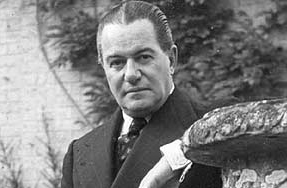

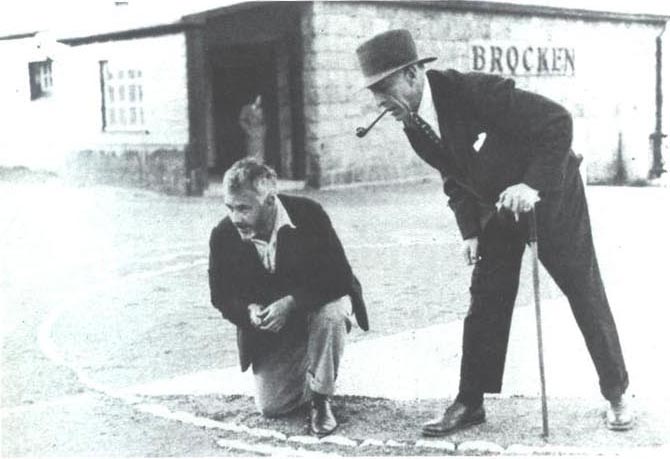
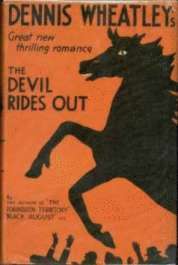
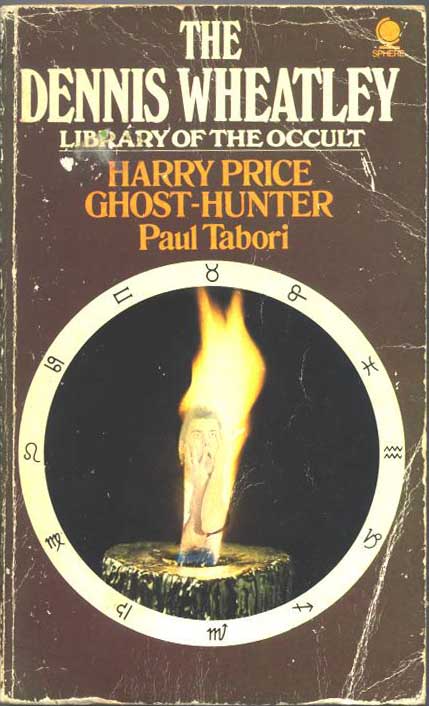
 The photograph
was of the rectory, taken from the far side of the road that ran along one
side of it. It was well established that at one time there had been
a fence with a gate in it along the grass verge on the rectory side of the
road. In the photograph, where the gate had been, was the clear
outline of a nun. They took the photograph to the editor, but for
reasons known only to himself he suppressed both the article and the
photograph.
The photograph
was of the rectory, taken from the far side of the road that ran along one
side of it. It was well established that at one time there had been
a fence with a gate in it along the grass verge on the rectory side of the
road. In the photograph, where the gate had been, was the clear
outline of a nun. They took the photograph to the editor, but for
reasons known only to himself he suppressed both the article and the
photograph.